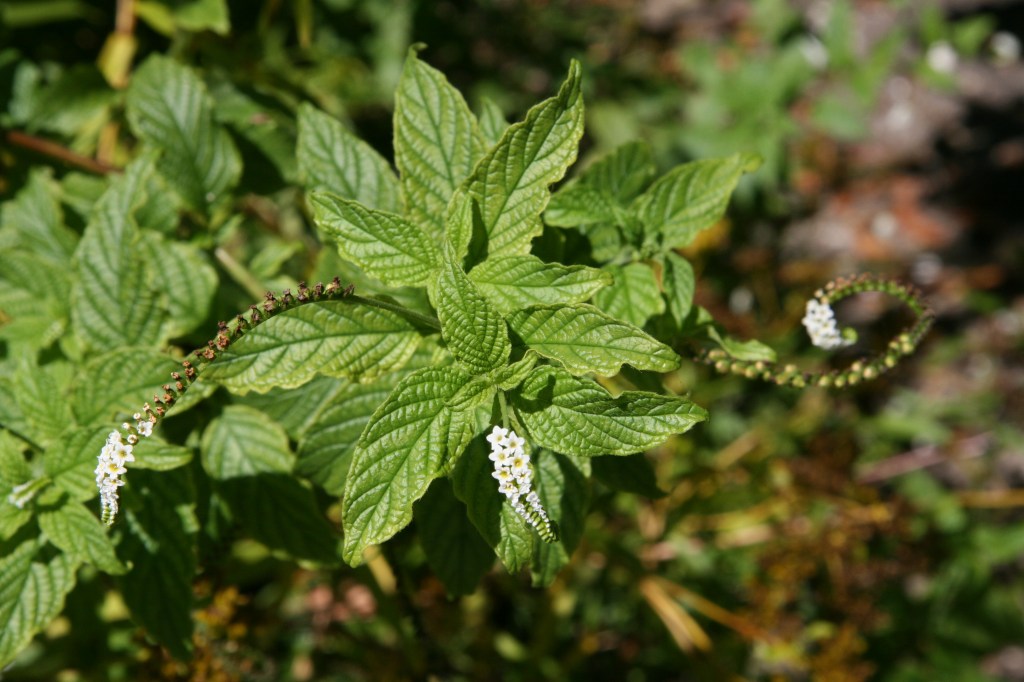Sometimes in sunny spots at the Oslo Riverfront Conservation Area you will find scorpionstail (Heliotropium angiospermum). Coastal hammocks & strands, the edges of salt marshes, and ruderal (disturbed) areas are its home in south Florida, south Texas, the Caribbean, and south American.
Also known as scorpion tail, this short-lived perennial re-seeds freely. Dr. George Rogers opines that this plant is self-pollinating. Click here to check out his commentary on his always entertaining & enlightening blog, Treasure Coast Natives.
Insects also may play a role in pollination. Bees, tiny waps, and butterflies (like the gulf fritillary butterfly shown below) flock to its tiny white flowers.

Its tiny, tiny flowers are borne along one side of a curved terminal spike (helicoid). The youngest flowers are found at the tip. Seeds held in tiny nutlets may be present along with the flowers and flower buds.

Its alternate leaves are lanceolate with a rough deeply veined top surface, entire margins (leaf edges), and pubescent undersides. Scorpionstail grows in partial shade or full sun which will “crinckle” its leaves.

Fast-growing, scorpionstail swiftly will become 1 – 3′ tall. Its stems may become woody with time. If you plan to include scorpionstail in your yard, be aware that it does not tolerant windy conditions well. Its leaves blacken in strong winds, which can be temporarily unsightly. The blackened leaves fall off and quickly are replaced by new fresh leaves.
